During the Labour vacation of May, Mr.Shing-Tung Yau, Dean of Qiuzhen College, led a group of nearly 20 teachers and students to Wuhan City and Wudang Mountain, Hubei province to carry out a Chinese history practice study tour, aiming to enhance students' understanding and cognition of Chinese history and culture through field visits.
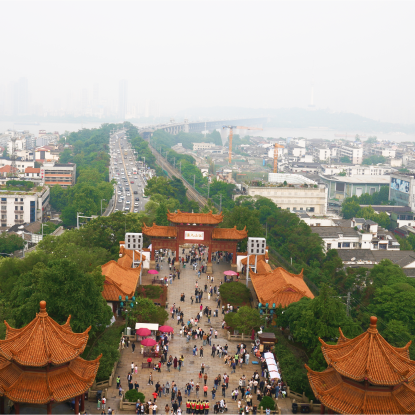
The teachers and students visited the Wuhan East Lake Scenic Area, Hubei Provincial Museum, Yellow Crane Tower, Wuchang Uprising Memorial Hall of the 1911 Revolution, and Wudang Mountain, a World Cultural Heritage site. During the visit, the teachers and students listened to the explanation carefully, asked questions actively, and had a deeper understanding of the history, culture, art, and other aspects of Jingchu.
01 Visiting the Hubei Provincial Museum
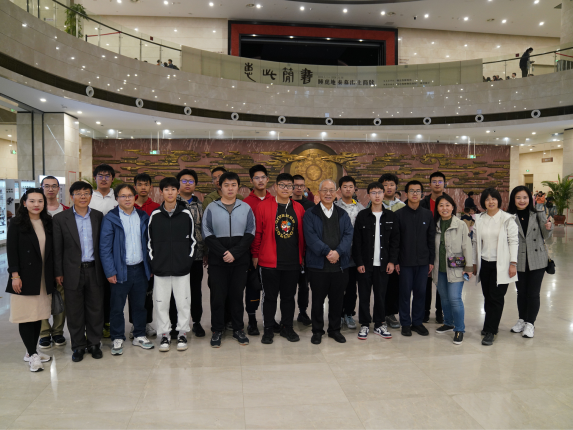
Teachers and students took a group photo at the Hubei Provincial Museum.
As a palace of Jingchu culture, Hubei Provincial Museum is characterized by Shang and Zhou bronzes, lacquer woodware from the Warring States and Qin Dynasties, slips of Chu and Han Dynasties, and gold and jade. It is famous at home and abroad for its complete system, rich quantity, exquisite quality, and distinctive regional characteristics. The teachers and students visited the exhibition of "Zeng Hou Yi(Marquis Yi of Zeng State)", "Yue King Goujian Sword Special Exhibition" and "Eight Hundred Years of Chu State", and enjoyed the "Ancient Sound: Chime-bells of Marquis Yi of Zeng State Concert". The historical relics and chime bell music in the museum show the glorious history and civilization of the Jingchu land.
Among them, the amazing Chime-bells of Marquis Yi of Zeng State, which were unearthed in Suizhou, Hubei province in 1978, are still intact after more than two thousand years. Its huge scale and exquisite carving are breathtaking. Confucius once said, "Prosperity is in poetry, standing in ritual, and success is in music." The Chime-bells of Marquis Yi of Zeng State fully demonstrate the highly developed rites and music civilization of the Zhou Dynasty and are a symbol of ancient Chinese wisdom.
The sword of King Goujian of Yue has survived thousands of years of no rust, but its blade is still sharp. It is very beautifully made, showing the superb craftsmanship of the bronze sword of Wuyue in the Spring and Autumn Period and the Warring States Period. This sword is not only a symbol of the outstanding skills of the ancient craftsmen, but also a witness of history, telling the legendary story of the great land of Chu thousands of years ago.

Chime-bells of Marquis Yi of Zeng State.
02 Visiting the Yellow Crane Tower
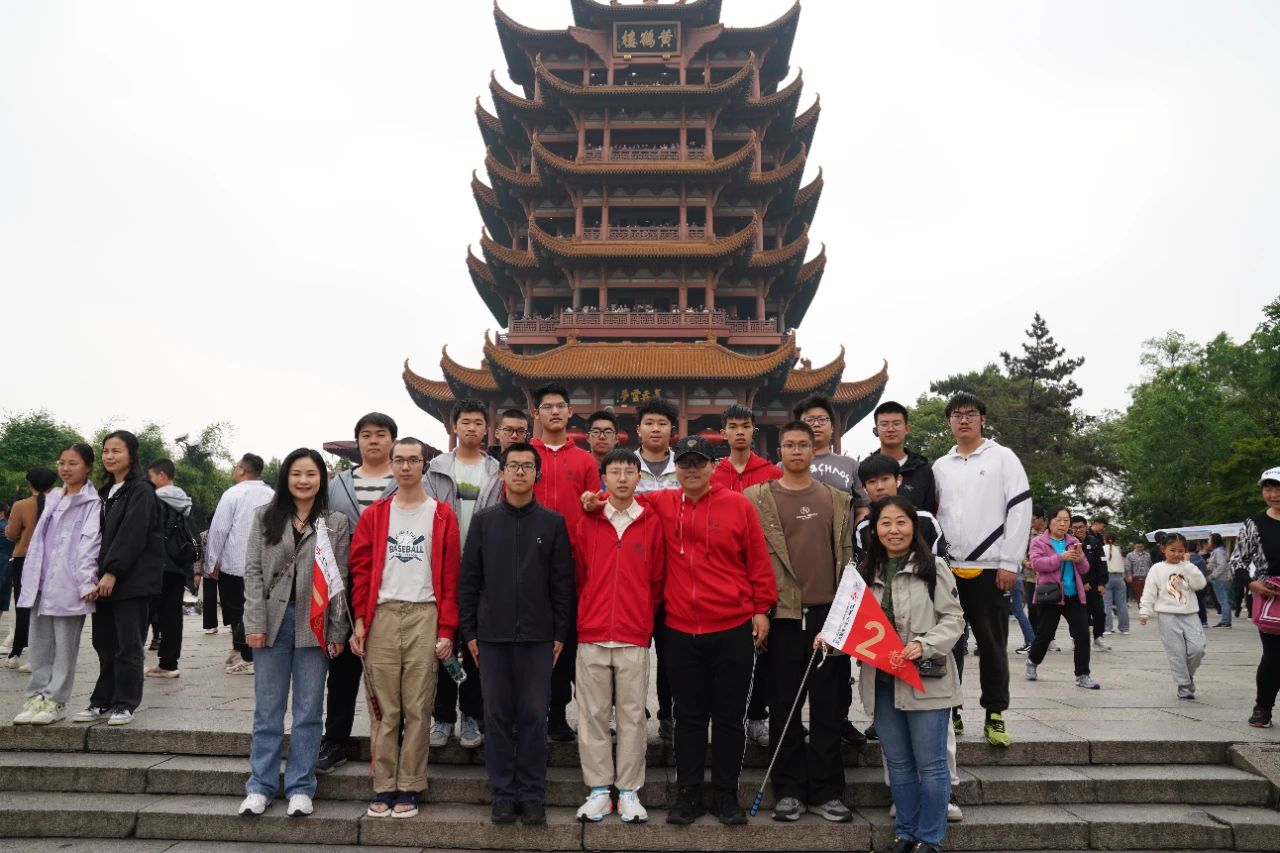
"The past people have gone with the Yellow Crane. Here only left the yellow Crane Tower."During the Tang Dynasty poet Cui Hao wrote the ancient poem" Yellow Crane Tower ". This poem is magnificent and famous in the past, allowing teachers and students to come to visit the Yellow Crane Tower. The Yellow Crane Tower was built in the second year of Huangwu (223). It was rebuilt and rebuilt many times after the war. The current Yellow Crane Tower was rebuilt in 1985 based on the Tongzhi Tower in the Qing Dynasty. Although it is for reconstruction, the good legends and classic poems related to it are still being praised. For example, Li Bai, Bai Juyi, Wang Wei, Su Shi, and other scholars of all dynasties have written many beautiful poems related to the Yellow Crane Tower, which have been handed down to this day. The Yellow Crane Tower is not only a building but also a kind of culture and spirit. The teachers and students climbed the Yellow Crane Tower, overlooking the Yangtze River, felt the integration of history and modernity, and deeply realized the beauty of Chinese culture.
03 Visiting the Wuchang Uprising Memorial Hall of the 1911 Revolution
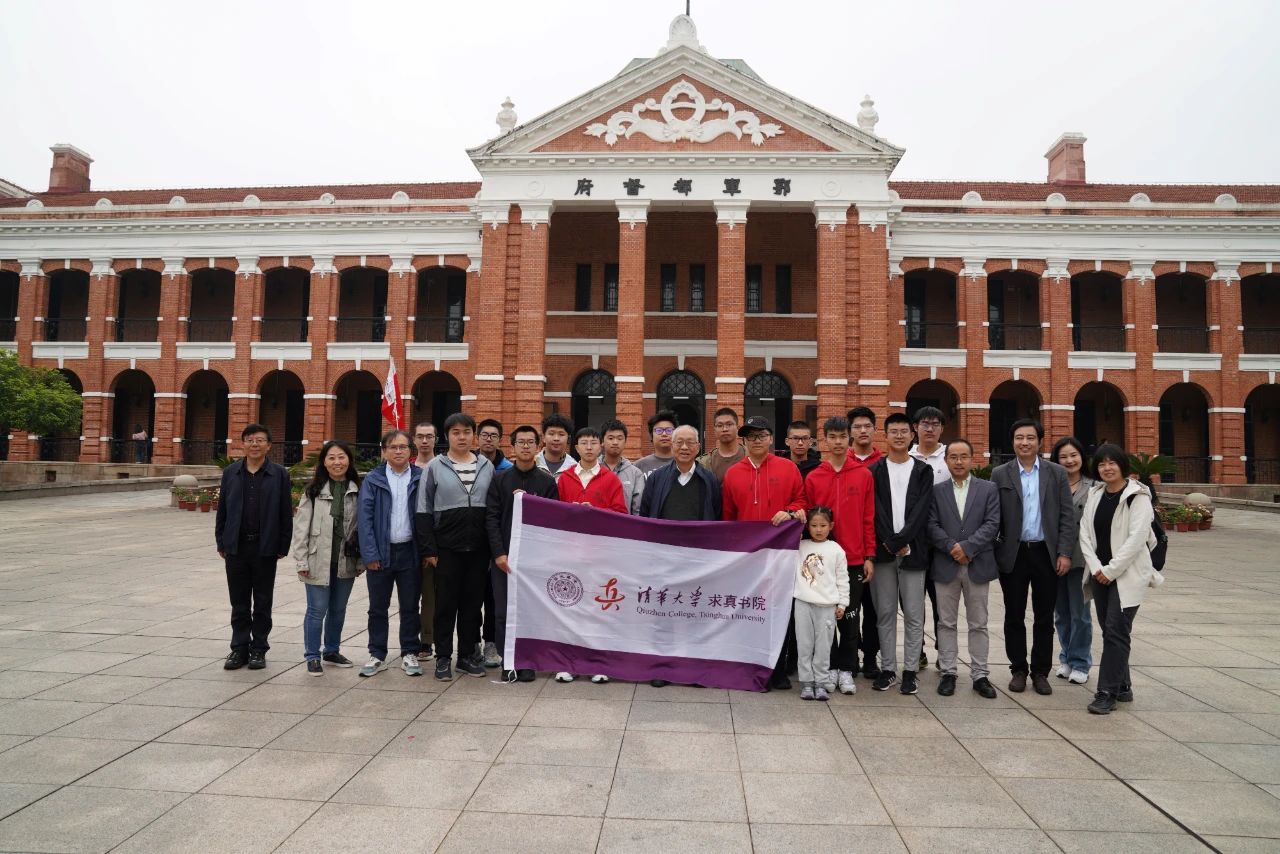
Teachers and students took a group photo in front of the former site of the Hubei Military government.
The Wuchang Uprising Memorial Hall of the 1911 Revolution was built at the former site of the Hubei Army government, to commemorate the Wuchang Uprising in 1911, which is a patriotic education base. On October 10, 1911, under the banner of Dr. Sun Yat-sen's revolutionary thought, the revolutionary people in Hubei took the first and launched the Wuchang Uprising, which received the whole country and led to the rapid collapse of the rule of the Qing Dynasty, thus ending the autocratic monarchy that had lasted for more than 2000 years in China and opening the republic process in China. The teachers and students visited the exhibitions such as "Being the First of the World in the 1911 Revolution" and "The Restoration of the Old Site of the Hubei Military Prefecture". Through the museum, they understood the historical background of the 1911 Revolution, its history, and its influence through the rich pictures, documents, and objects. Countless revolutionary pioneers fought for the overthrow of the monarchy and the creation of a republic, and their spirit inspired us to continue to work hard for the great rejuvenation of the Chinese nation.
04 Visiting the Wudang Mountain

Teachers and students' group photo.
Wudang Mountain is located in Shiyan City, Hubei Province, located in the north of the Yangtze River, which is the eastern section of Daba Mountain, with its beautiful scenery and long history. It is the birthplace of ancient Chinese Taoism and one of the four famous Taoist mountains in China, and is known as "the first fairy mountain in the world". The teachers and students visited the Purple Cloud Palace, Prince Slope, and boarded the Jinding. The exquisite ancient buildings, profound cultural deposits, and unique Taoist culture impressed the teachers and students deeply. Wudang Mountain is one of the cradles of martial arts, Wudang boxing, Wudang sword, and other martial arts schools enjoy a good reputation in the world. The teachers and students also learned Taijiquan on the spot and appreciated the charm of Wudang martial arts.
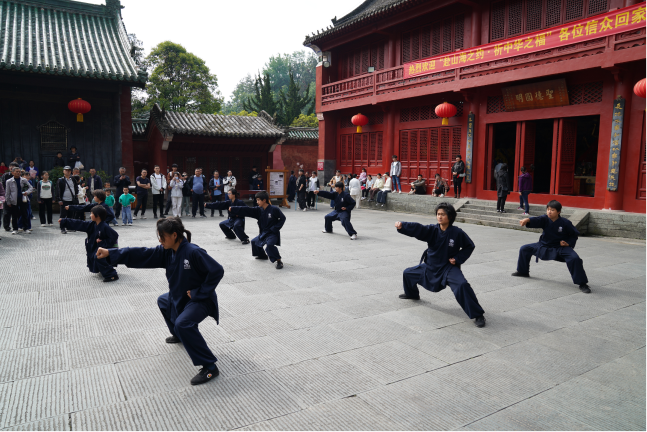
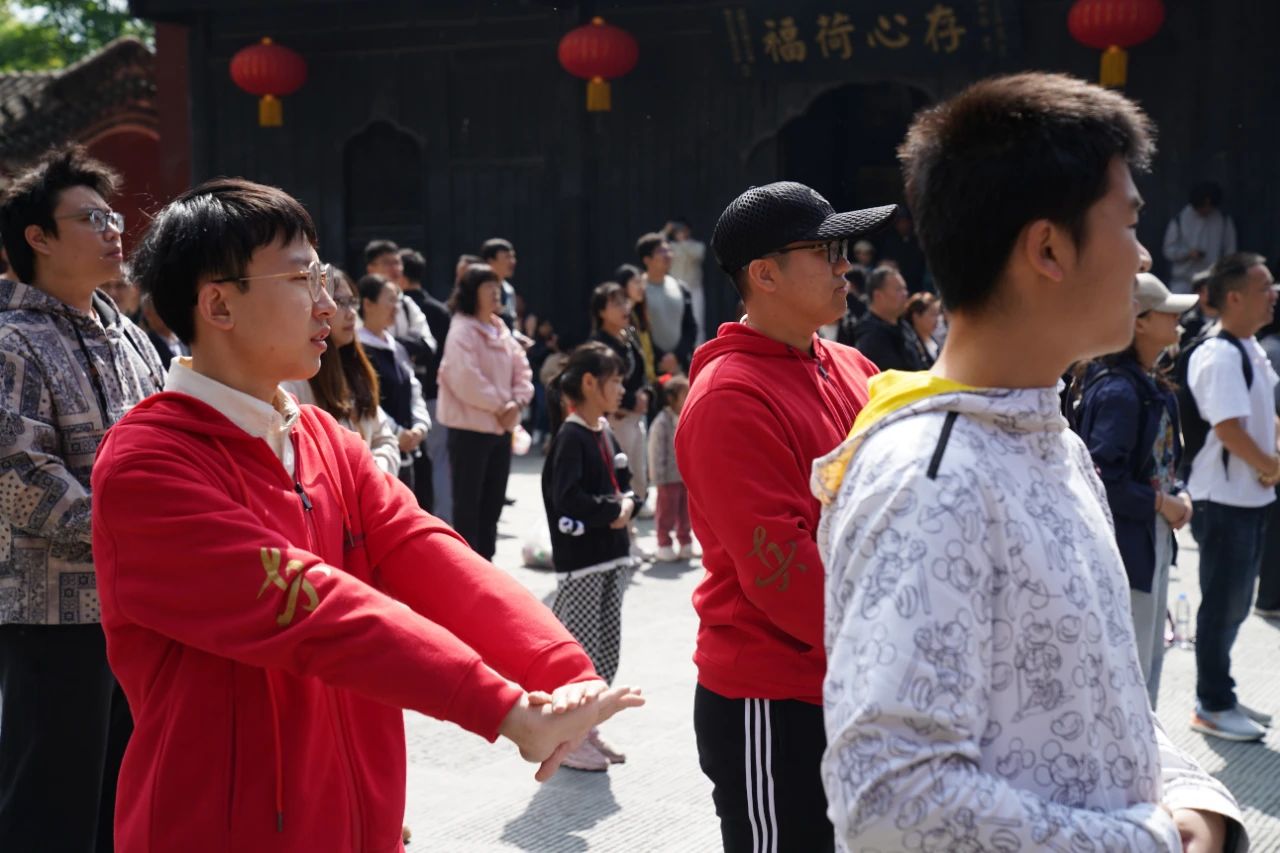
The students learned Tai Chi.
05 Holding a symposium between teachers and students
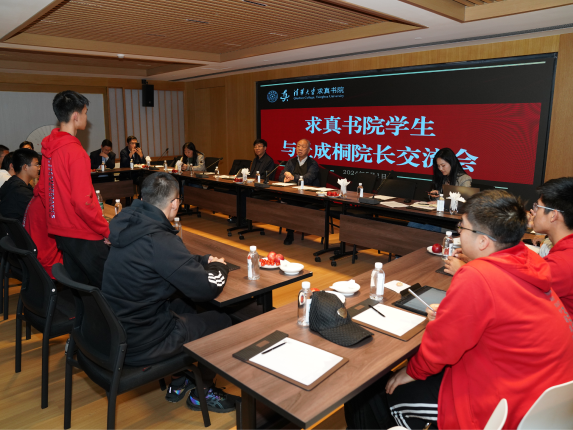
Mr.Yau answered questions from his classmates
During the trip between teachers and students, Mr.Yau held a symposium with the truth-seeking students to discuss the student's learning situation, interest direction, and difficulties and gave guidance and suggestions. Wu Rongling, vice president of the Beijing Institute of Mathematical Science and Applications, Wang Xiaofang, Associate Dean of Qiuzhen College, Zhu Ran, College Dean's assistant, and Xie Lufang, director of the College General Office participated in the discussion.
Mr.Shing-Tung Yau listened to the student's academic performance and stressed that credits are not the most important thing, but the key is to lay a good foundation and master mathematical tools. He believes that with mastering the skills, problem-solving will be more efficient. At the same time, he stressed the importance of learning physics and suggested that students pay attention to interdisciplinary disciplines and understand the characteristics and methods of different disciplines, to carry out research more effectively.
After understanding the students' interests and learning situation, Mr.Yau suggested that we read more books, communicate with teachers and students, actively think and ask questions actively, and learn to find and study articles seriously. Finally, he recommended relevant literature and books according to the different conditions of the students and suggested taking appropriate courses.
After understanding the students' interests and learning situation, Mr.Yau suggested that we read more books, communicate with teachers and students, actively think and ask questions actively, and learn to find and study articles seriously. Finally, he recommended relevant literature and books according to the different conditions of the students and suggested taking appropriate courses.
Writing | Xie Lufang, Guo Youran
Translation | Gao Xudong